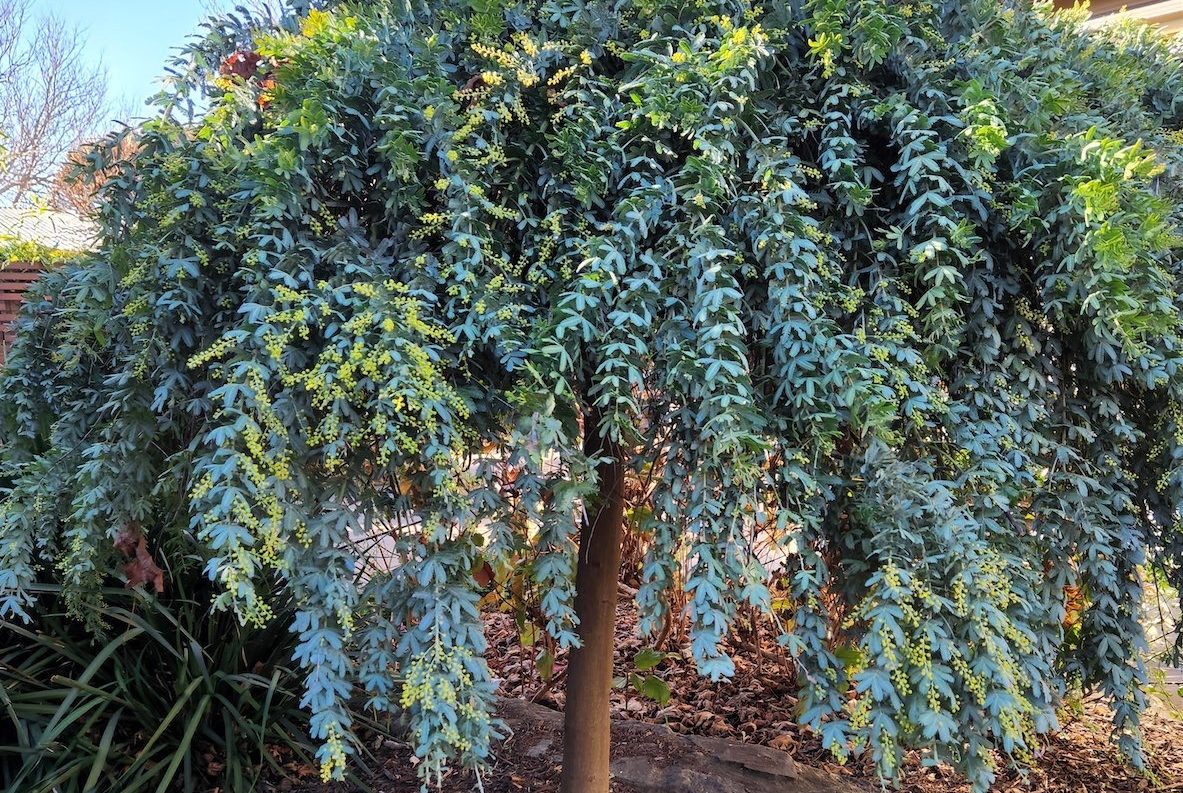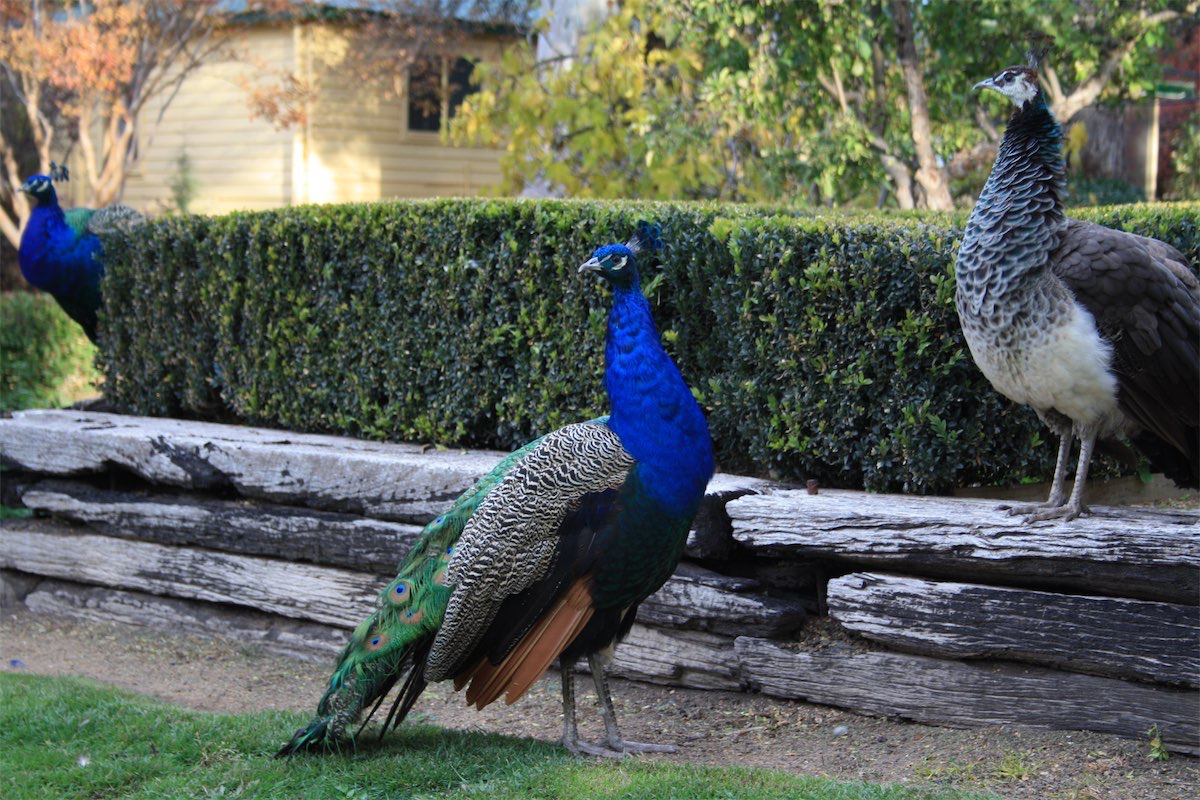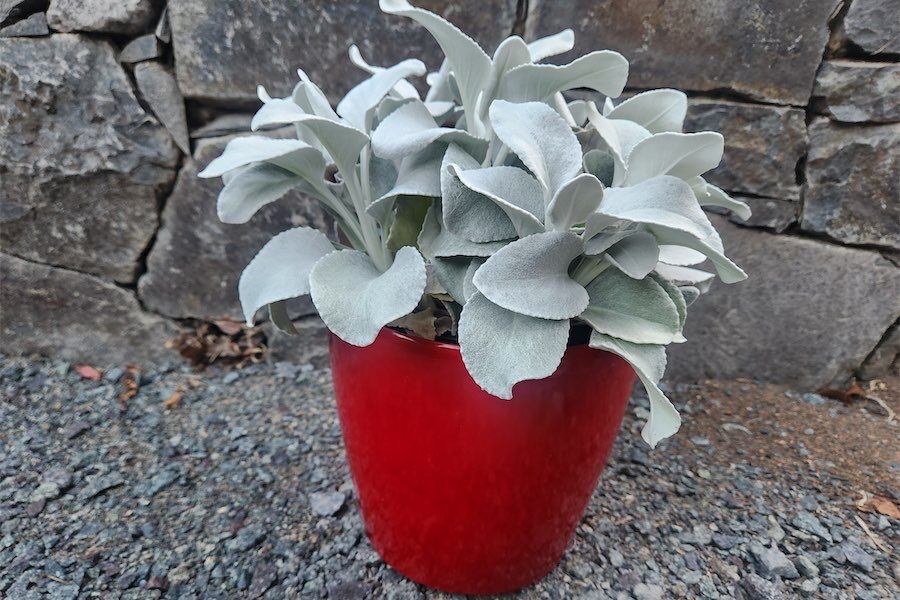
Wattles or acacias will start flowering over the next few months and can bring colour to a winter garden, a reminder that spring is getting closer, writes gardening columnist JACKIE WARBURTON.
THE golden wattle (Acacia pycnantha), native to large parts of south-eastern Australia, grows well in Canberra.

It’s a popular choice for a medium-size tree that grows up to eight metres. When mature, it has phyllodes instead of leaves, with bright-yellow, fragrant flowers.
The golden wattle is also the national floral emblem and celebrates its 35th anniversary on Wattle Day, September 1.
If garden space is limited, look for a grafted species of wattle. A popular choice is the Cootamundra Wattle “Goldilocks”, a grafted standard that grows two metres tall and wide. It’s a terrific feature plant with its fern-like evergreen blue foliage and a weeping habit.
Grafting wattles is becoming more popular to increase the longevity of the fast growing, short-lived species. The “Goldilocks” hybrid has sterile seed, unlike its parent tree that is, unfortunately, considered a weed in many areas, including our own region. It spreads into local bushland, invading healthy ecosystems. Not recommended for the garden, but it’s important to remove any plants that have self-sown before they flower and set seed.
All wattles are legumes and can be useful for windbreaks, sheltering more delicate plants in the garden. They are not fussy about soils provided they are not waterlogged and positioned in full sun to part shade. Keep the water up to them in summer and prune after flowering.

GUINEA fowl and peafowl have been a part of some suburbs in Canberra for more than 30 years. In Narrabundah, the community fought to keep the local peacocks around in their suburbs and gardens a few years back.
Having large-footed birds, or even chickens, can be challenging as their preferred choice for a dust bath is the bed the new seedlings were planted in! And their poop is everywhere.
Physical barriers are the only solution for anyone with peacocks eating the garden. Speaking from the experience of managing a flock of 15 or so birds in the past, they can make a mess in a short amount of time.
They eat just about anything, and their omnivore diet is varied from grains, grasses, fruit, flowers, insects and any garden plants that take their fancy. In late spring, their mating call can be quite loud at night. It lasts for about six weeks before the males calm down.
There are only three species of this pheasant family, Congo Peacock, Green Peacock and Blue Peacock – the one we see most commonly in Canberra. A large bird, native to India and Sri Lanka, it grows to a metre in length and the train of feathers is even longer. The peacock’s prized feathers are dropped in summer and can take a few years to fully regrow.
Peafowls roost in groups during the night in tall trees and, in a domestic environment, can live up to 50 years. Although lovely to look at, they’re not good companions or protectors, just big-footed eaters and unfortunately their numbers are decreasing due to the increase of the number of foxes in suburbia.
Jottings
- Keep the water up to rhododendrons and azaleas leading up to flowering.
- Plant berries and currants in acidic, well-composted soil.
- Clean garden tools and blades on the mower before spring.
- Feed garlic with lots of nitrogen until two months before harvest.
Who can be trusted?
In a world of spin and confusion, there’s never been a more important time to support independent journalism in Canberra.
If you trust our work online and want to enforce the power of independent voices, I invite you to make a small contribution.
Every dollar of support is invested back into our journalism to help keep citynews.com.au strong and free.
Thank you,
Ian Meikle, editor





Leave a Reply